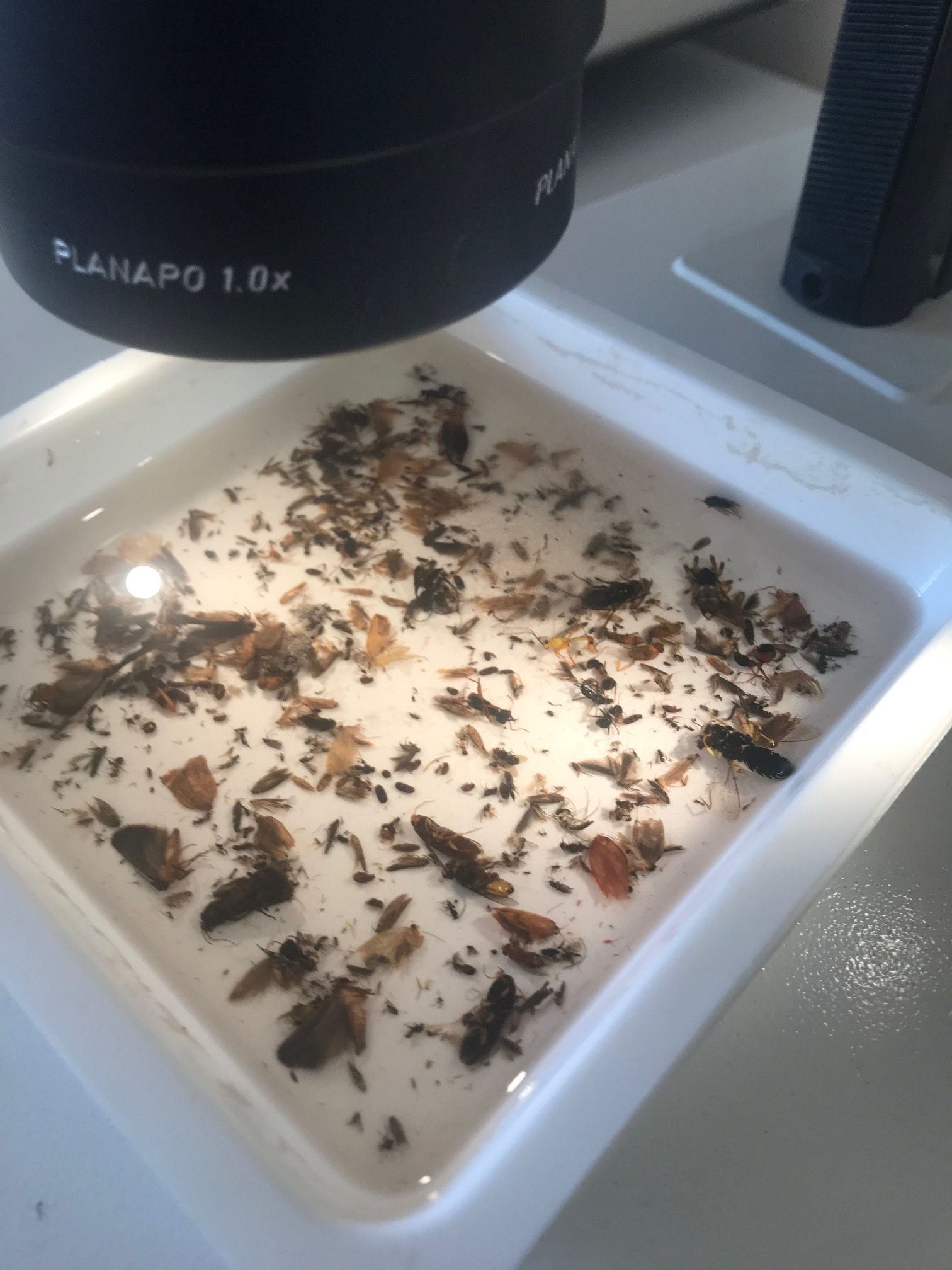Hi Ramco! I just finished sorting the second trap from the last set you sent – and we found a microgastrine! This is one of the wasps I study – and it’s a different species to the first one you caught in your trap – and this one is a female! You might be able to see the ovipositor (the egg laying tube where the stinger would be) in the photo below.

This is a species in the genus Glyptapanteles, and I am pretty sure it is a new species! SUPER EXCITING! It will be a few months until I can make sure (I’m going to sequence the DNA and compare it to the other Glyptapanteles species in Australia) but if it is a new species, I will need your help to name it! This is the science of taxonomy – working out if species are new to science, giving them a scientific name and then describing them with lots of words, measurements and images so that other people can identify it in the future.
I thought I would also introduce you to a couple of the other insects that were in this trap, from orders of insects that not many people know about.

This super cute little invertebrate (animal without a backbone) is a Springtail, from the order Collembola. They are called springtails because of the appendage at the end of their abdomen (the long pointy white thing in the photo) that they use like spring – it is held under tension, and when they release it, it can spring them up into the air incredibly fast. They are closely related to insects, and also have 6 legs, but are not actually insects!

This is a thrip, from the order Thysanoptera. If you ever pull a rose apart, you will probably find these tiny insects inside. Some thrips feed on buds of flowers, whilst others feed on other insects.

Thanks for keeping the trap running – I hope the new pole holds up better than the last one and the trap stays up for longer this time!






















